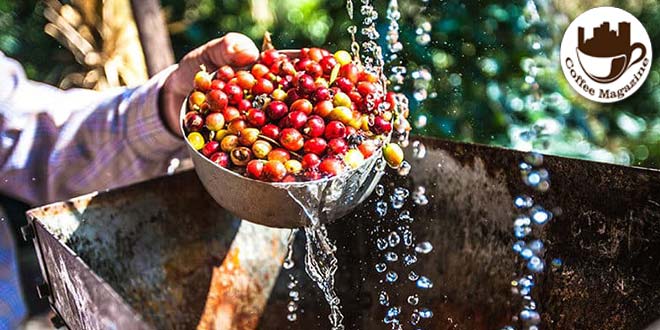مجله قهوه – در دنیای خاص قهوه، روش شسته شده Washed process غالب است. این فرآیند، به دلیل مقدار زیادی آب مصرفی، بسیار متفاوت است.
بهطورکلی، این روش شامل مراحل زیر است.
اول، گیلاسهای تازه برداشتشده با استفاده از مکانیزم غلتکی دندانهدار که پوست و قسمت اعظم گوشت آن را از لوبیا میکشد، تفاله گرفته میشود.
در این مرحله، لوبیاها هنوز در لایهای از موسیلاژ پوشانده شدهاند.
سپس قهوه در یک مخزن آب تخمیر میشود تا باقیمانده مخاط را از بین ببرد. در طول این مرحله، لوبیای «بد» به سمت بالا شناور میشود و برداشته میشود.
در آخر، دانههای قهوه خشک میشوند.
این را میتوان به روشهای مختلفی مانند خشککردن در برابر آفتاب یا خشک شدن مکانیکی به دست آورد.
تخمیر و خشک شدن تنظیمشده میتواند کنترل بیشتری بر کیفیت و نقص در مقایسه با فرآیند طبیعی به تولیدکننده بدهد.
قهوه شسته شده اغلب اسیدیته برجسته و مشخصتری را نشان میدهد.
تغییرات در تخمیر تأثیر زیادی در قهوه دارد.
قهوههای کنیا دومین تخمیر را انجام میدهند که تصور میشود دلیل این تمایل به داشتن چنین میوههای پر جنبوجوش و اسیدیته پیچیده باشد.
کوچکترین تغییرات در پردازش میتواند نتایج حیرتانگیزی داشته باشد و این امر هنوز در حال بررسی است.
منبع: The Coffee Dictionary, Maxwell Colonna
Washed process
In the world of speciality coffee, the washed method dominates.
So named due to the large amount of water used, the process, like all others, varies widely.
Broadly, though, the method comprises the following stages.
First, the freshly harvested cherries are de-pulped, with the cherries passing through a cog-like rolling mechanism that pulls the skin and most of the flesh off the bean.
At this point, the beans are still covered in a layer of mucilage.
The coffee is then fermented in a trough of water to remove the remaining mucilage.
During this stage, “bad” beans float to the top and are removed.
Finally, the coffee beans are dried.
This can be achieved in a number of ways, such as sun drying or mechanical drying.
The regulated fermentation and drying can give a producer more control over quality and defects compared to the natural process.
Washed coffee often presents a more prominent and defined acidity.
Changes in the fermentation have a big impact on the coffee.
Kenyan coffees undergo a second fermentation, which is thought to be part of the reason they tend to have such vibrant fruit and complex acidity.
The tiniest alterations in processing can have startling results and are still being explored.
مجله قهوه را در اینستاگرام دنبال کنید.
 مجله قهوه، نشریه تخصصی صنعت قهوه مجله تخصصی صنعت قهوه
مجله قهوه، نشریه تخصصی صنعت قهوه مجله تخصصی صنعت قهوه












































